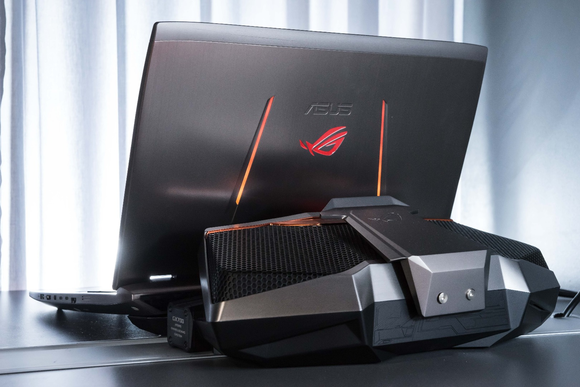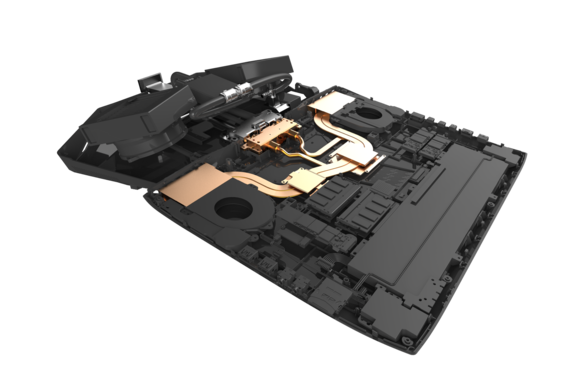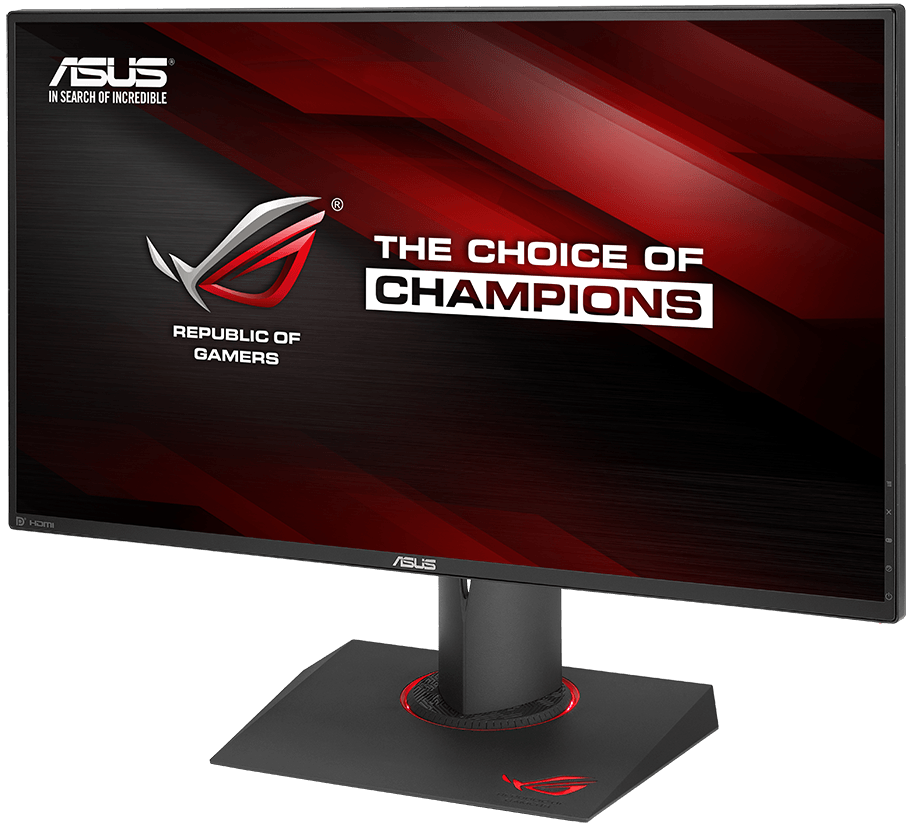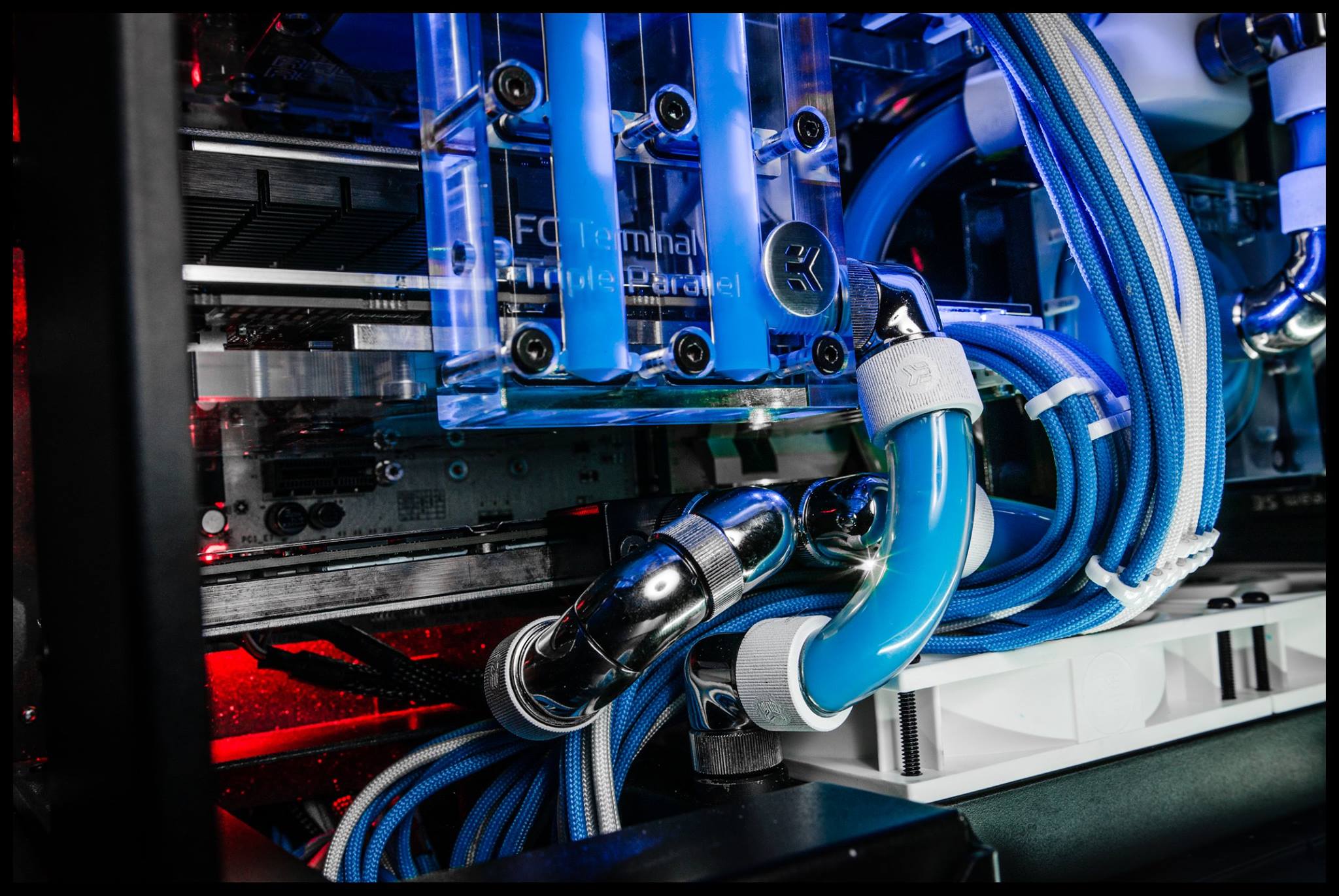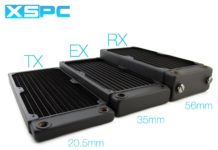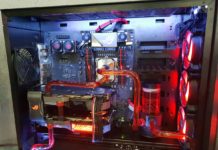So Asus had been promoting a special gaming event in San Francisco on Friday night. At the event they launched a few new products, some expected, some teased and some surprising. Let’s start with the surprising:
Asus GX700 Laptop with Liquid Cooling
Yes Asus, who have experimented with liquid cooling support on their Poseidon GPUs, Maximus Formula heatsinks and ARES III have decided to go with a liquid cooled laptop:
Before you say, well that thing looks a bit heavy – don’t worry it’s a dock. The laptop itself uses a standard heatpipe arrangement to pull heat from the CPU and GPU and out to a heatsink that uses a standard blower fan. So the laptop can work on it’s own. When the dock is connected then the heatpipes themselves get cooled by the liquid cooling unit:
The dock seems to feature QDC’s that look awfully like Koolance’s QD2s. These fittings are known to have a few drops of liquid escape (when the internal spring works well) and so small amounts of air will build up in the system every time you dock/undock. To refill you’ll have to send the dock in for service. Yeah no kidding.
The GX700 at least packs a ton of hardware. A real non mobile version of the GTX980 is present, however the CPU is firmly mobile as it’s a 6820HK which is essentially the high end overclockable mobile cpu from the skylake generation. Given the cooling we would have preferred to see a real 6700K (like the eurocom/clevo sky x laptops or the Origin EON-17X), however the 6820HK will still no doubt support some overclocking.
The other features are awesome though – a 4K screen is included and up to 64GB of memory can be included. This beats the EON-17X for example which is stuck with a 1080p screen. The price however can be beaten. Rumors are that this will be over $6000 and for that price you could buy a nice lightweight ultrabook and a nice lightweight lan rig to cover all your bases.
Asus also announced the Maximus VIII Impact – the Z170 based incarnation of it’s awesome mITX board. Nothing really new here since the original impact came out:
We still have the VRM daughterboard and the sound daughterboard. The lack of IO cover is disappointing. Even more so the lack of some rear mounted M.2 slots is an even bigger disappointment. ROG seem to be in a bit of flux about whether to change to orange/grey from black/red or not. Initially the orange line up was purely for the Strix sub brand, then it started infiltrating it’s way into the ROG products. However ROG seem to be flip flopping a bit here and now we have grey/red. as to whether ROG should go orange or stay team red. All we can say is that grey/orange worked for Tennessee this weekend:
Lastly Asus confirmed the PG279Q Swift is confirming and is 8 Bit IPS/165Hz as was teased:
This is a great upgrade for the old 144Hz TN Swift. The old swift had a rash of issues, however when it works it is one of the clearest monitors for FPS gaming. The bezels are nice and small but the only downside is that the IPS type panel however will be slower to respond than TN. For those that care about every last Hz then soon there will be another option soonish – 200Hz 35″ curved 2560×1080 screens from Acer and probably Asus too. So it’s a great time to be a PC gamer – we have cheap 4K screens, we have high refresh rate screens, we have curved screens, we have g-sync and freesync, we have lightboost, ULMB and strobed options. The downside to all of this is that you need to choose and that the industry is not settled in on one technology so you could be choosing the betamax of monitor technology right now. Plus with Display Port 1.3 on it’s way we should soon see 4K@120Hz via a single cable in a year or two. In the meantime if you’ve got money to burn here are our suggestions:
FPS Gaming: 144+Hz 1440p or 200Hz 2560×1600
16:9/RTS Gaming: 4K GSync/FreeSync
Immersive Gaming: 34″ Curved 100Hz 3440×1440 GSync
Photo Editing: 5K
Video Editing: 34″ 10 Bit Curved 3440×1440 (for editing) + Cinema 4K 4096×2160 (source/output monitoring)
Best all round: 100Hz 3440×1440 GSync
Lastly some other news:
EK’s Intel 750 SSD Waterblock:

Unlike HDDs, SSDs are usually quite low power and don’t usually have heat concerns. The 750 series is more of a beast due it’s harder core controller chip and so Intel worked with EK to develop a liquid cooled block for it:

From the looks of things two chips will get TIM – the main one will be the controller chip, and the secondary is a voltage regulator. Meanwhile the memory which usually runs cool will probably use thermal pads. Here’s the original PCB (courtesy of anandtech):
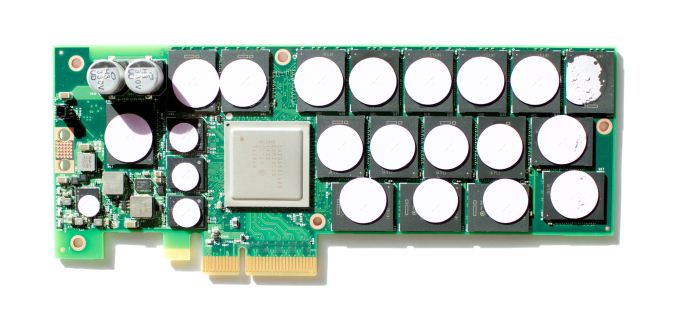
With the PCB only rated at 20W a cooling block does seem a bit extreme. We would also like to see an EK bridge that extends out further. This PCI card is half height, meaning that when used with a GPU that the standard bridge ports would hit the neighboring cards. In EK’s own build with the card a different bridge for example seems to have been used to avoid this – the Intel ssd card is below the GPUs here:








